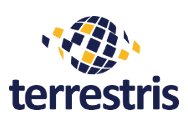- Address search (current addresses as well as buildings under construction)
- Search for locality- and field-names
- Feedback functionality, trough which data corrections can be reported (i.e. hiking trails that differ from the route portrayed or erroneous addresses including the correct one.)
Mobiler Kartenclient des Geoportal Bund geo.admin.ch der Schweiz ist online
Bern/Bonn, September 07, 2011 – The geoportal of the Swiss Confederation is popular: Up to 10.000 users per day access the map viewer at map.geo.admin.ch. This is where citizens can view, print and order geodata. Since the beginning of September 2011 this high quality data can also be used on mobile devices (smartphones). The web based solution „mobile.map.geo.admin“ runs on Android-devices as well as iPhones and iPads.
Uncomplicated, simple access
The Swiss Confederation worked together with cantons, cities, universities and private organisations to decide on the fundamentals of mobile.map.geo.admin.ch, the geodata offering for mobile devices. The company terrestris GmbH & Co. KG from Bonn, Germany was contracted to implement the web map client based on OpenLayers and SenchaTouch, that is made available as open source software. Users of mobile.map.geo.admin.ch do not need to download additional software nor do they require a login or password. Through supplying this client the Swiss Confederation fulfills the task to make geodata available to the public in general as mandated by the Swiss Geodata Accessibility Law. http://mobile.map.geo.admin.ch is available with immediate effect: Entering the URL in a mobile device will automatically take you to the mobile version of the map viewer.
Practical information on the spot
Geodata of the Swiss Confederation usually have official character and are of high quality documented by the seal of approval „confederation“. Historical maps are also available so that users can find out on the spot whether they are utilising an historical route or whether an historical building is within sight. One can also search for communities, towns, bodies of water or mountains („Which mountain is this?“). Furthermore you can get information about danger zones („Am I within a danger zone?“), conservation areas („Is this a spawning area for amphibiens?“) as well as town- and settlement development („What did it look like here 100 years ago?“).
Additional functionality comprises:
